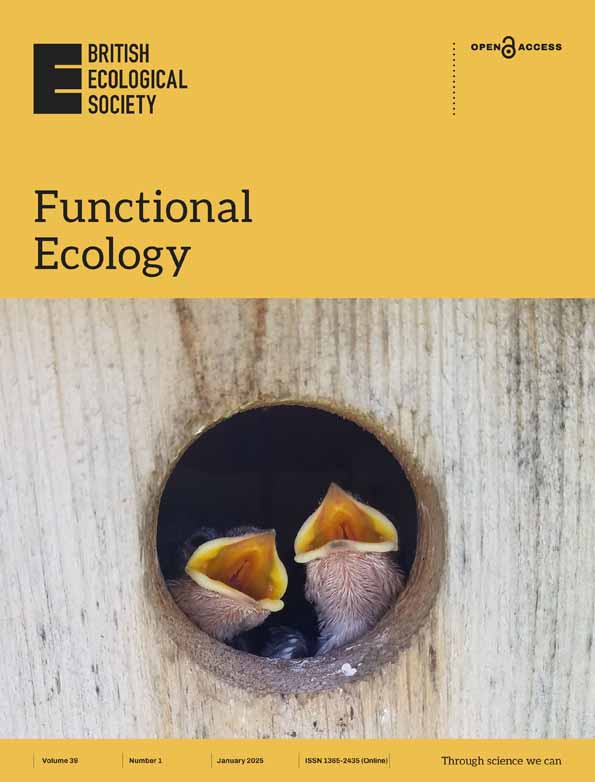Ver ítem
- xmlui.general.dspace_homeCentros Regionales y EEAsCentro Regional Patagonia NorteEEA BarilocheArtículos científicosxmlui.ArtifactBrowser.ItemViewer.trail
- Inicio
- Centros Regionales y EEAs
- Centro Regional Patagonia Norte
- EEA Bariloche
- Artículos científicos
- Ver ítem
Linking effect traits of soil fauna to processes of organic matter transformation
Resumen
Soil organic matter (SOM) transformation processes are regulated by the activities of plants, microbes, and fauna. Compared with plants and microbes, effects of soil fauna are less understood because of their high taxonomic and functional diversity, and mix of direct and indirect effect mechanisms. Trait-based approaches offer a generic perspective to quantify mechanistic relationships between soil fauna and SOM transformations, including decomposition,
[ver mas...]
Soil organic matter (SOM) transformation processes are regulated by the activities of plants, microbes, and fauna. Compared with plants and microbes, effects of soil fauna are less understood because of their high taxonomic and functional diversity, and mix of direct and indirect effect mechanisms. Trait-based approaches offer a generic perspective to quantify mechanistic relationships between soil fauna and SOM transformations, including decomposition, translocation, and stabilisation of organic carbon. Yet, at present, we lack a consensus concerning relevant key effect traits of soil fauna (i.e. those affecting ecosystem functioning).
Here, we address this knowledge gap by focusing on relationships between soil fauna effect traits and SOM transformations. Based on existing literature, we identify key processes linked to SOM transformations, and fauna effect traits universally applicable across taxa and soil types, and discuss the process-trait links.
We define eight SOM transformation processes that are directly affected by soil fauna: (i) litter mass loss, (ii) litter fragmentation, (iii) SOM aggregation in faeces, (iv) SOM aggregation in soil mineral particles, (v) decomposition of faeces, (vi) SOM and mineral translocation, (vii) pore space creation and maintenance and (viii) SOM stabilisation. We link these processes to general effect traits classified into four categories: (a) food selection and ingestion, (b), digestion and excretion, (c) mobility, and (d) body mass and metabolic rate. We also propose proxies when effect trait measurements are laborious.
The proposed links between effect traits and SOM transformation processes need to be validated in targeted experiments. We urge researchers to obtain quantitative experimental data, together with metabolic approaches, to integratively quantify soil fauna contributions to soil functioning.
[Cerrar]

Autor
Bonfanti, Jonathan;
Potapov, Anton M.;
Angst, Gerrit;
Ganault, Pierre;
Briones, Maria J.I.;
Calderón-Sanou, Irene;
Ting-Wen, Chen;
Conti, Erminia;
Degrune, Florine;
Eisenhauer, Nico;
Ferlian, Olga;
Hackenberger, Davorka;
Hauer, Amelie;
Hedde, Mickaël;
Hohberg, Karin;
Krogh, Paul Henning;
Mulder, Christian;
Pérez Roig, Camila;
Russell, David;
Shelef, Oren;
Zheng, Zhou;
Zuev, Andrey G.;
Berg, Matty P.;
Fuente
Functional Ecology : 1-16. (First published: 20 December 2024)
Fecha
2024-12
Editorial
Wiley
ISSN
0269-8463
1365-2435
1365-2435
Formato
pdf
Tipo de documento
artículo
Palabras Claves
Derechos de acceso
Abierto
 Excepto donde se diga explicitamente, este item se publica bajo la siguiente descripción: Creative Commons Attribution-NonCommercial-ShareAlike 2.5 Unported (CC BY-NC-SA 2.5)
Excepto donde se diga explicitamente, este item se publica bajo la siguiente descripción: Creative Commons Attribution-NonCommercial-ShareAlike 2.5 Unported (CC BY-NC-SA 2.5)


